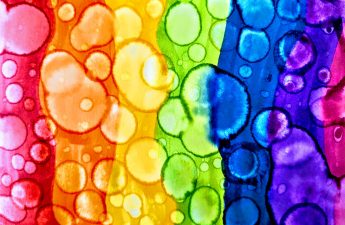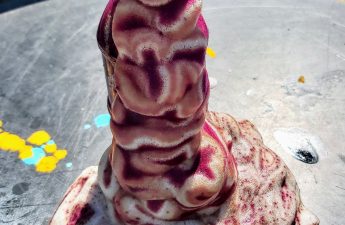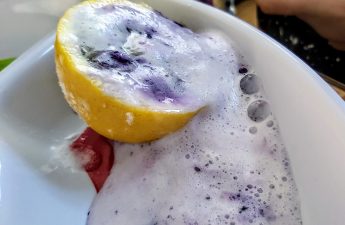Some of you may remember seeing my post, a while back, about NON-NEWTONIAN FLUIDS?! If you haven’t seen it, it’s worth checking it out if you or your kids don’t mind getting messy! 🙂
My kids are always asking to make slime or oobleck so I decided to step up my game on this one and make things a little more interesting.
We decided on oobleck for this time, (we do a TON of slime usually so I fancied a change). Last time we made it we used cornflour and water but I wanted it to be more fun, with a little twist, so we used the following…
- 1.5 parts POTATO STARCH*
- 1 part TONIC WATER
- Glow in the dark paints (optional)
- Black light*
- Foil Baking Trays*
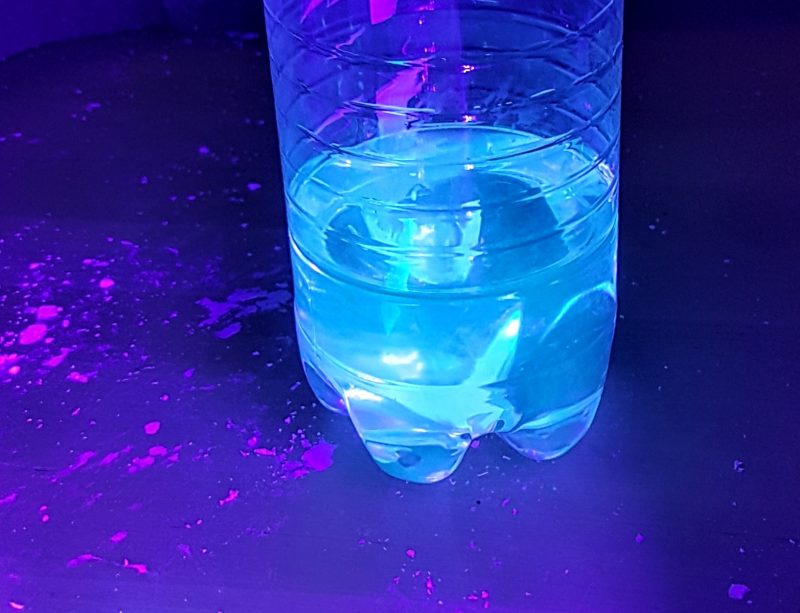
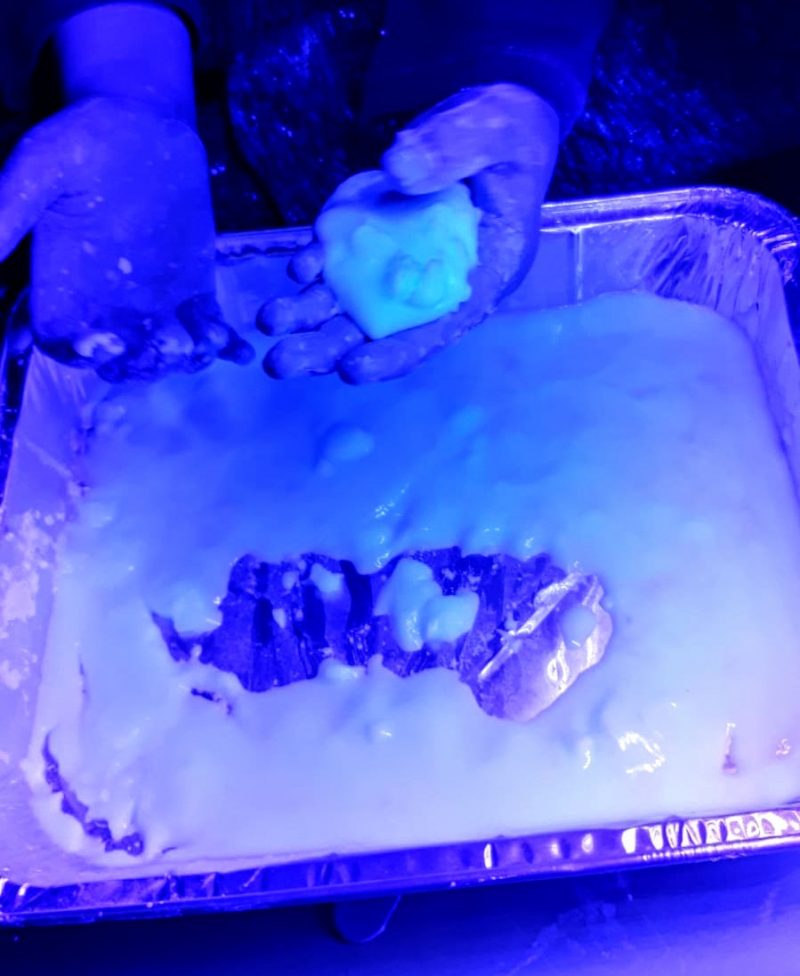
We did all our work in our loft/studio with the black light on which made it more fun for my nutty professors and their assistant, (their cousin was with us for the day).
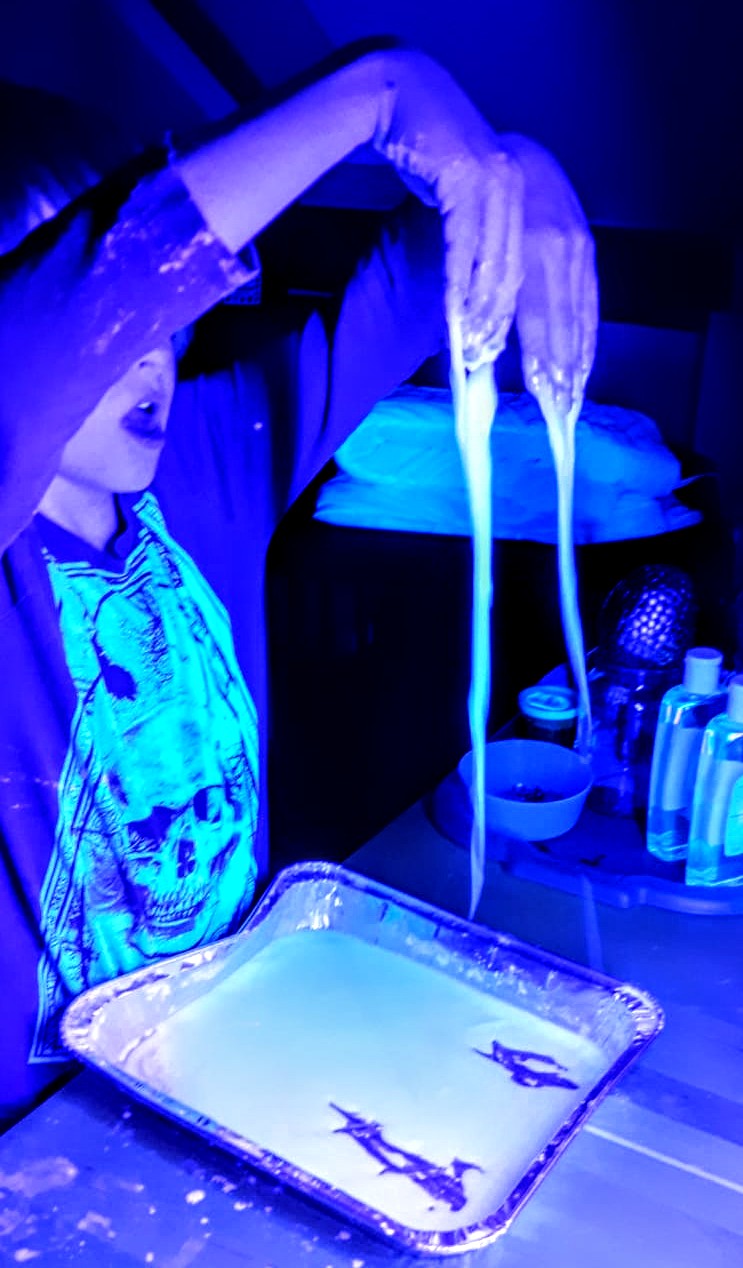
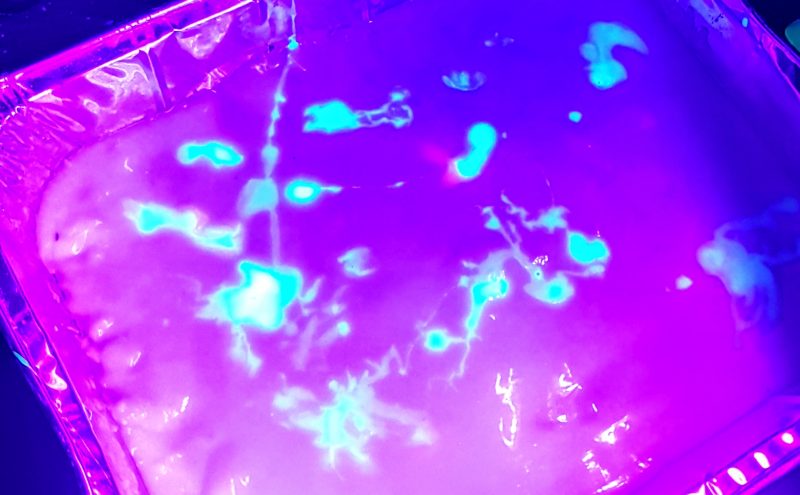
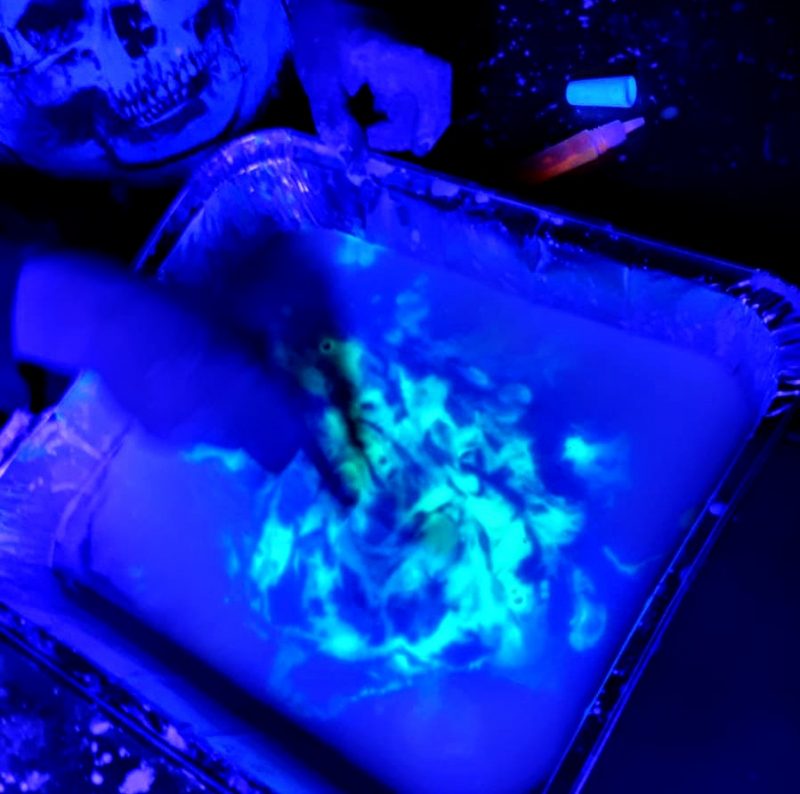
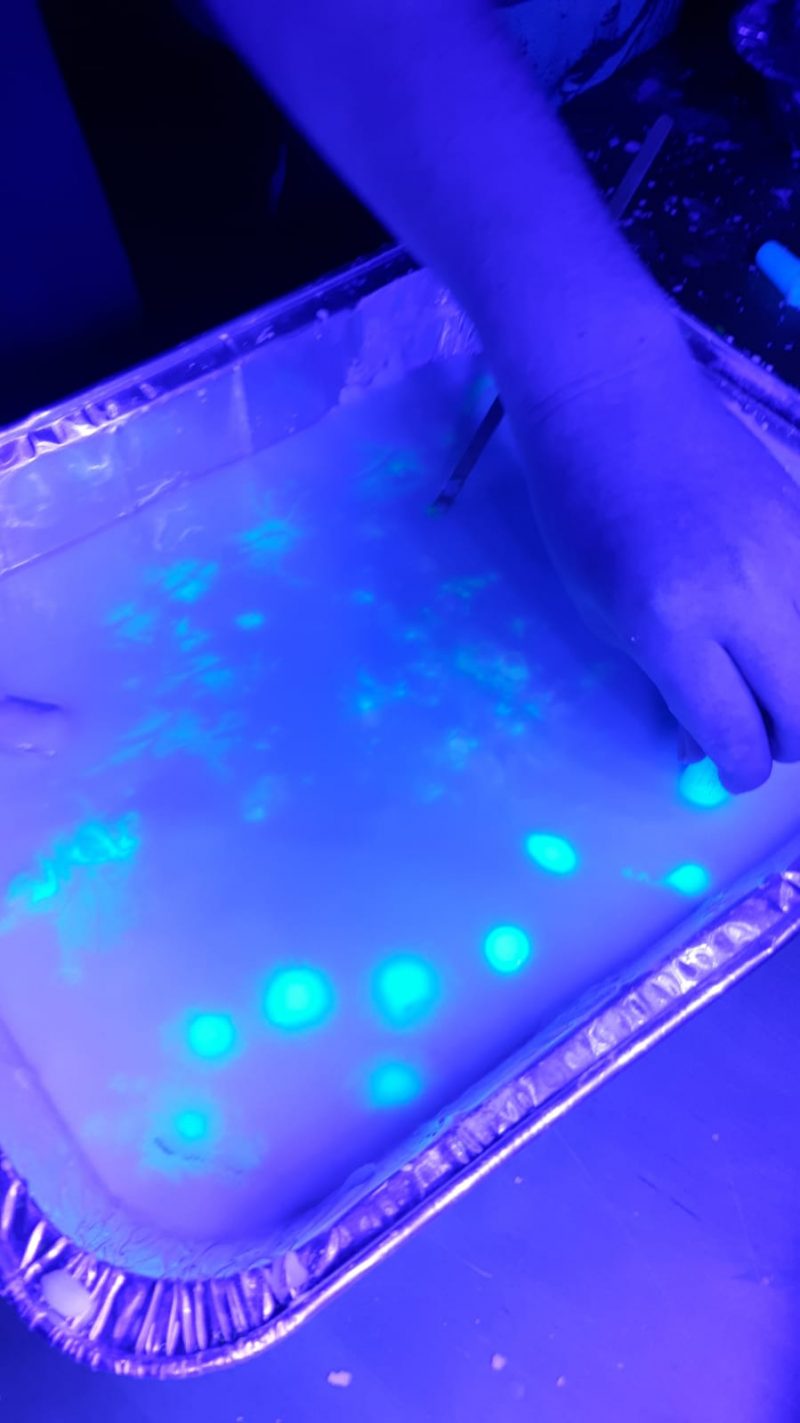

So we found out a few things by doing this fun experiment. First of all, we found out the tonic water contains the chemical quinine. This makes the water fluoresce a brilliant, bright blue! This lead us onto looking into what quinine actually is and where it comes from; here is what we found out…
The formula is: C20H24N2O2
Quinine is a common treatment for malaria. Some people believe that it can also help with leg cramps and restless legs syndrome. Quinine comes from the bark of the cinchona tree. This tree is native to central and South America, as well as some islands in the Caribbean and western parts of Africa.
We used potato starch this time, purely to be different and to experiment. If you are really good, you can actually get the starch by prepping the potatoes yourself, but this impatient mama couldn’t be bothered with all that so I just ordered a bag off Amazon – easy! 🙂
Because of the quinine in the tonic water – the oobleck fluoresced under the black light and was so awesome! Adding other glowy, (is that even a word?), things to it just made it all the more fun!
The Chemicool Dictionary gives an awesome definition of fluorescence.
My original post on NON-NEWTONIAN FLUIDS gives an explanation as to what is happening with this experiment but I also found this cool site that gives some more awesome facts.
My kids love doing experiments using the black light, and this was an awesome way of discussing some other details rather than just the oobleck itself. 🙂

